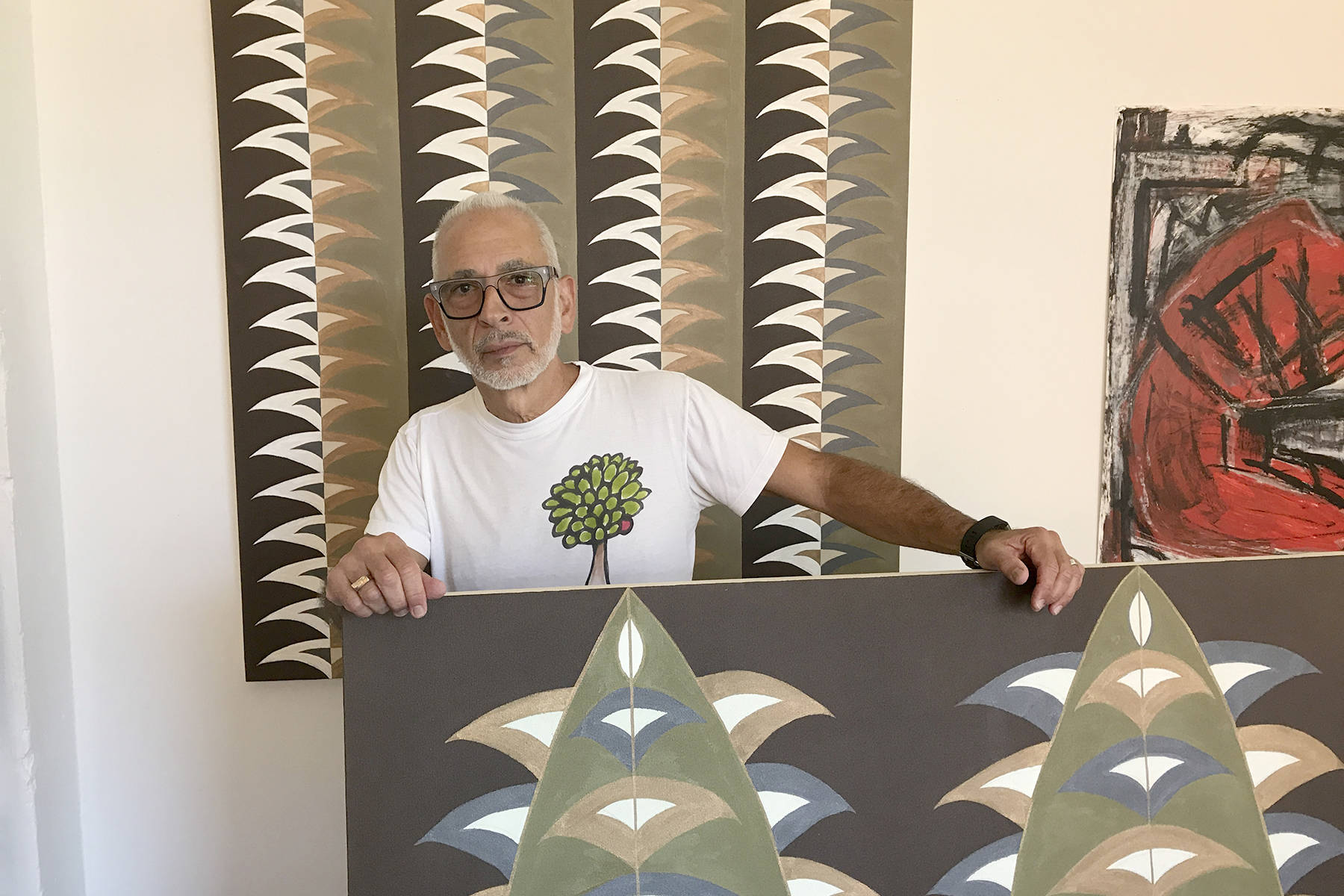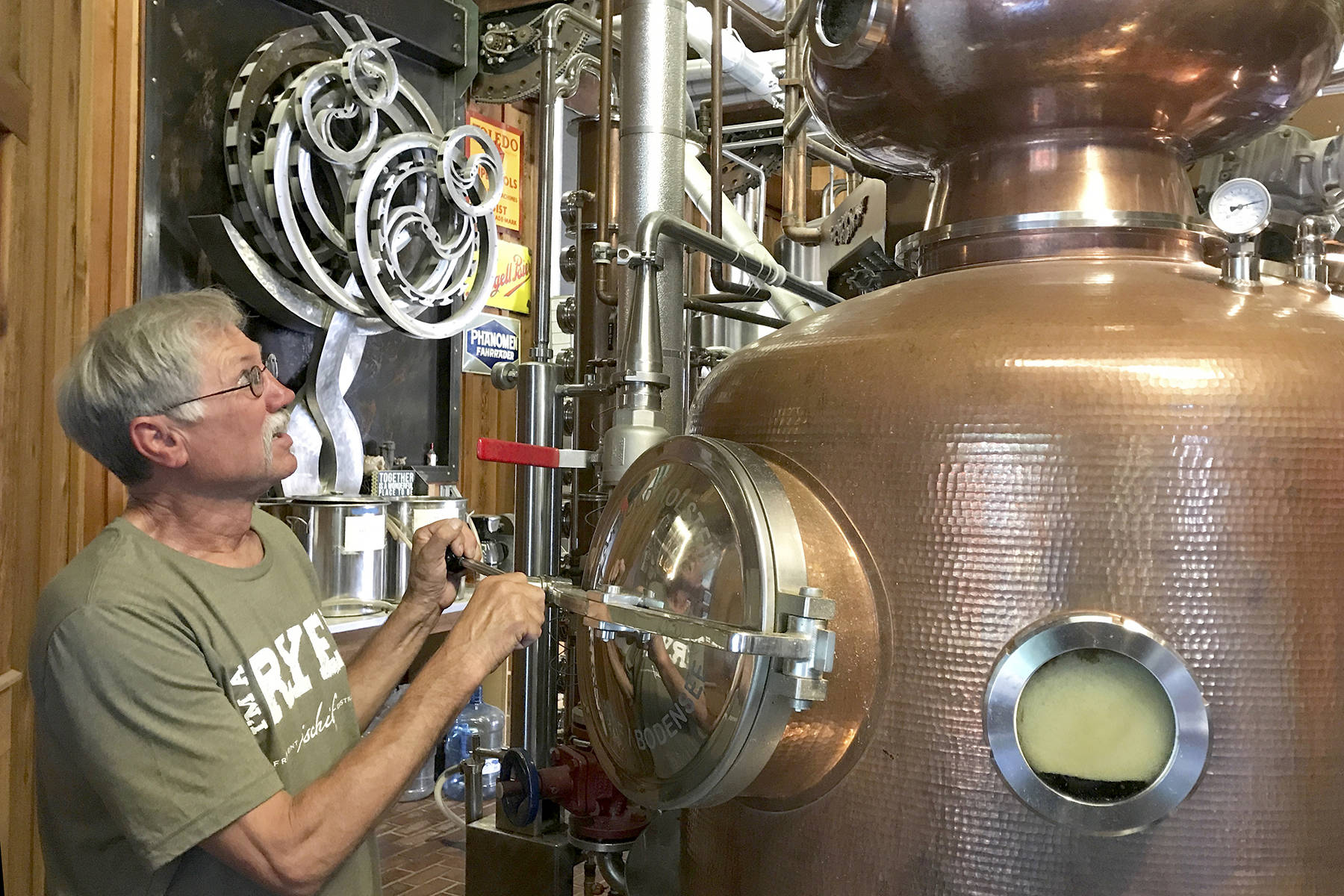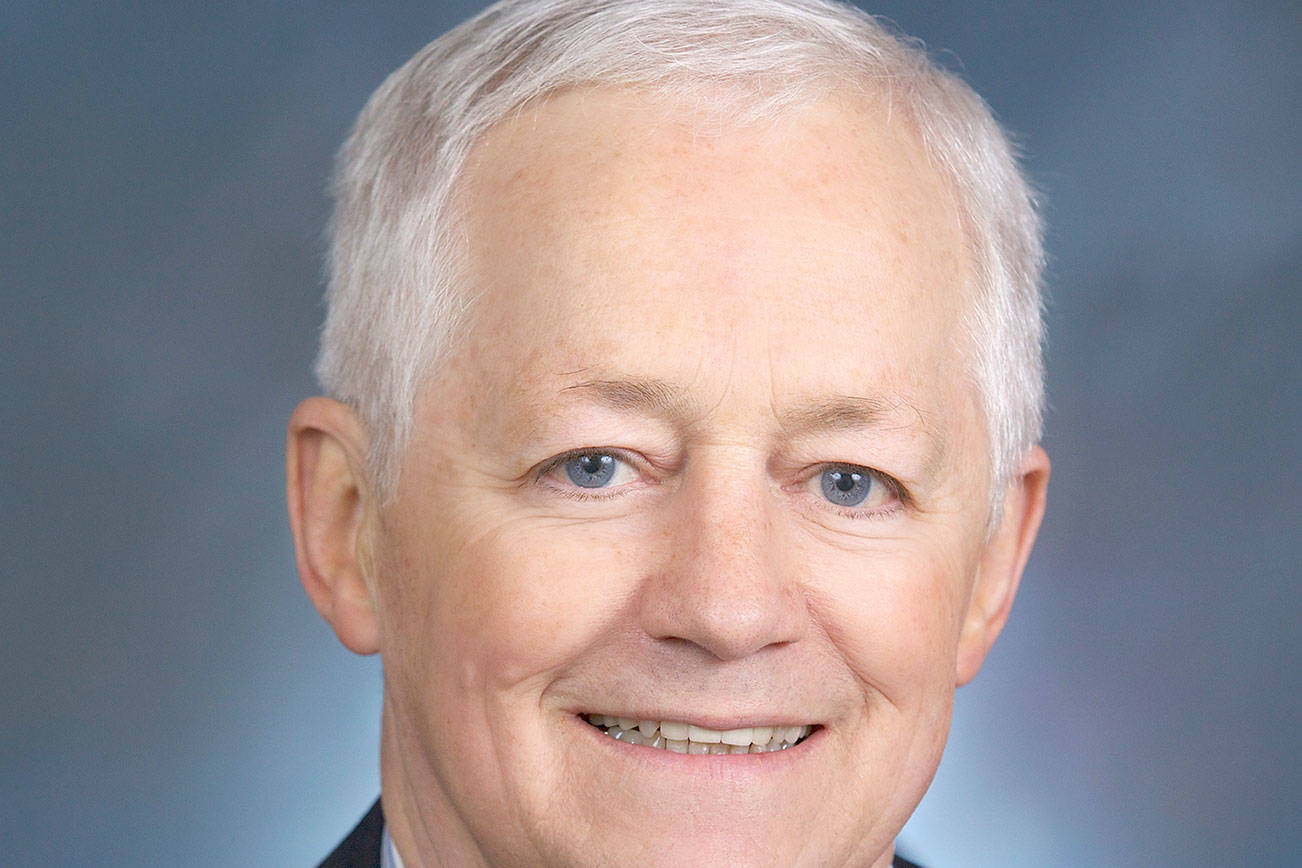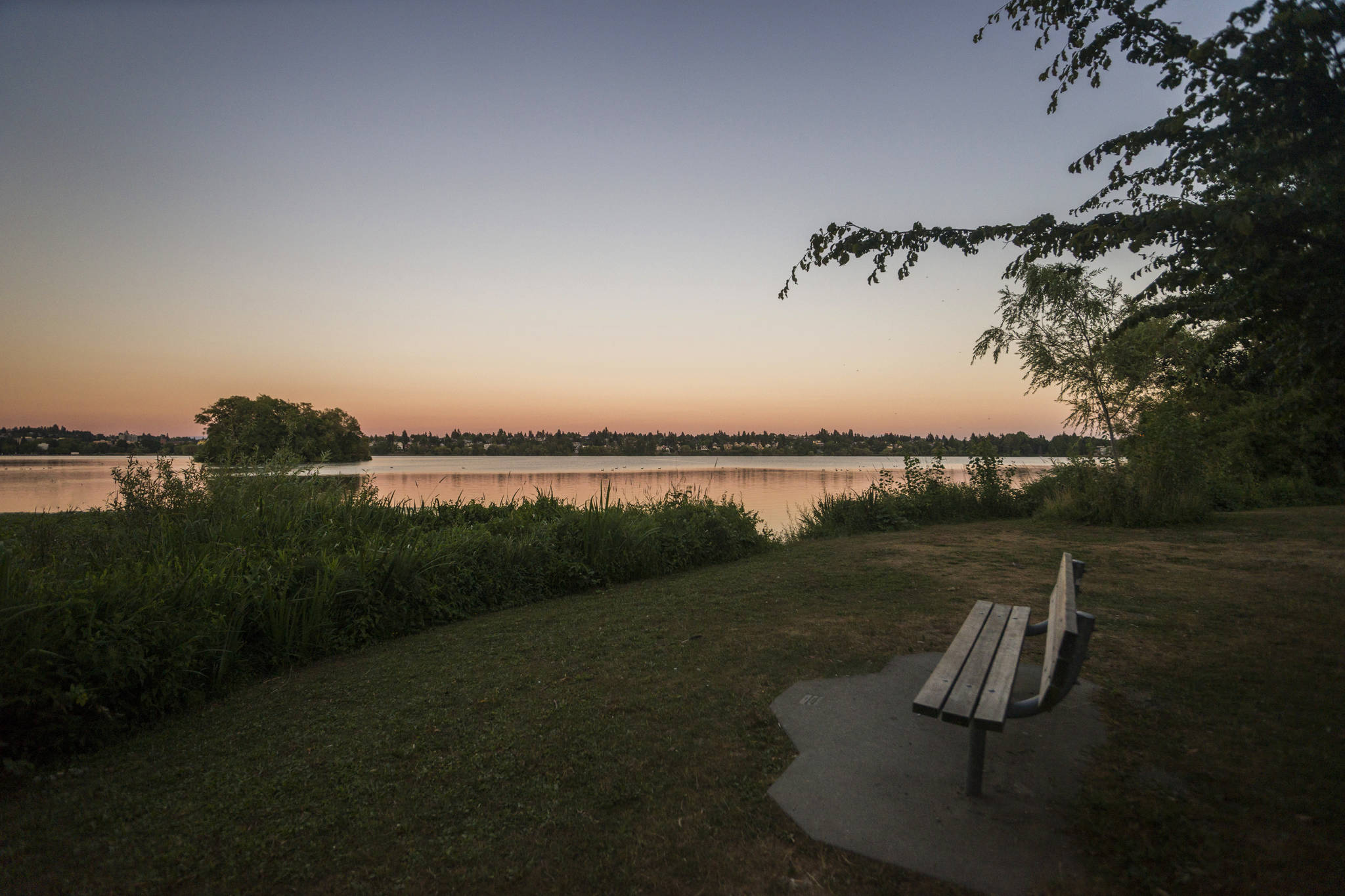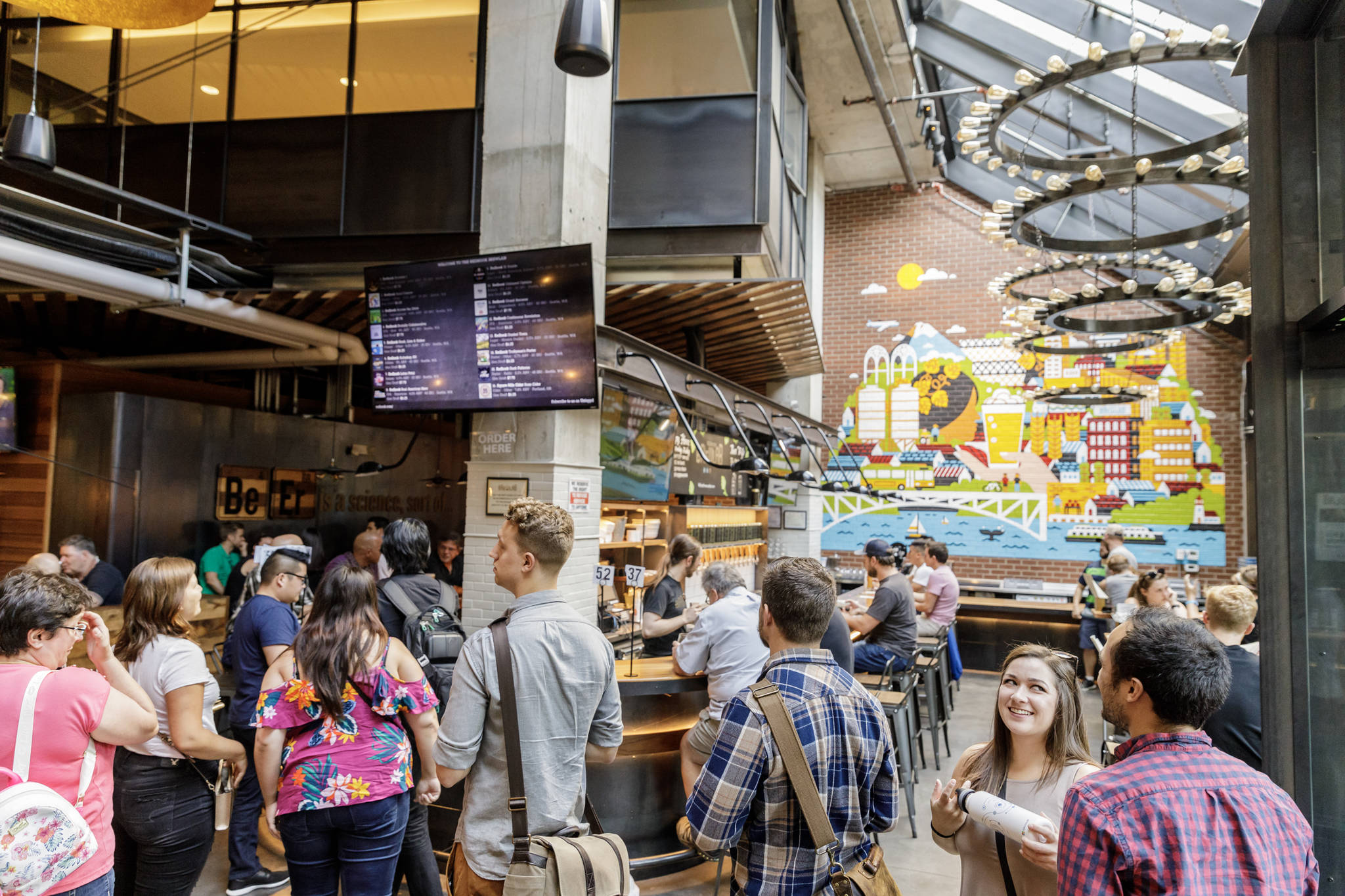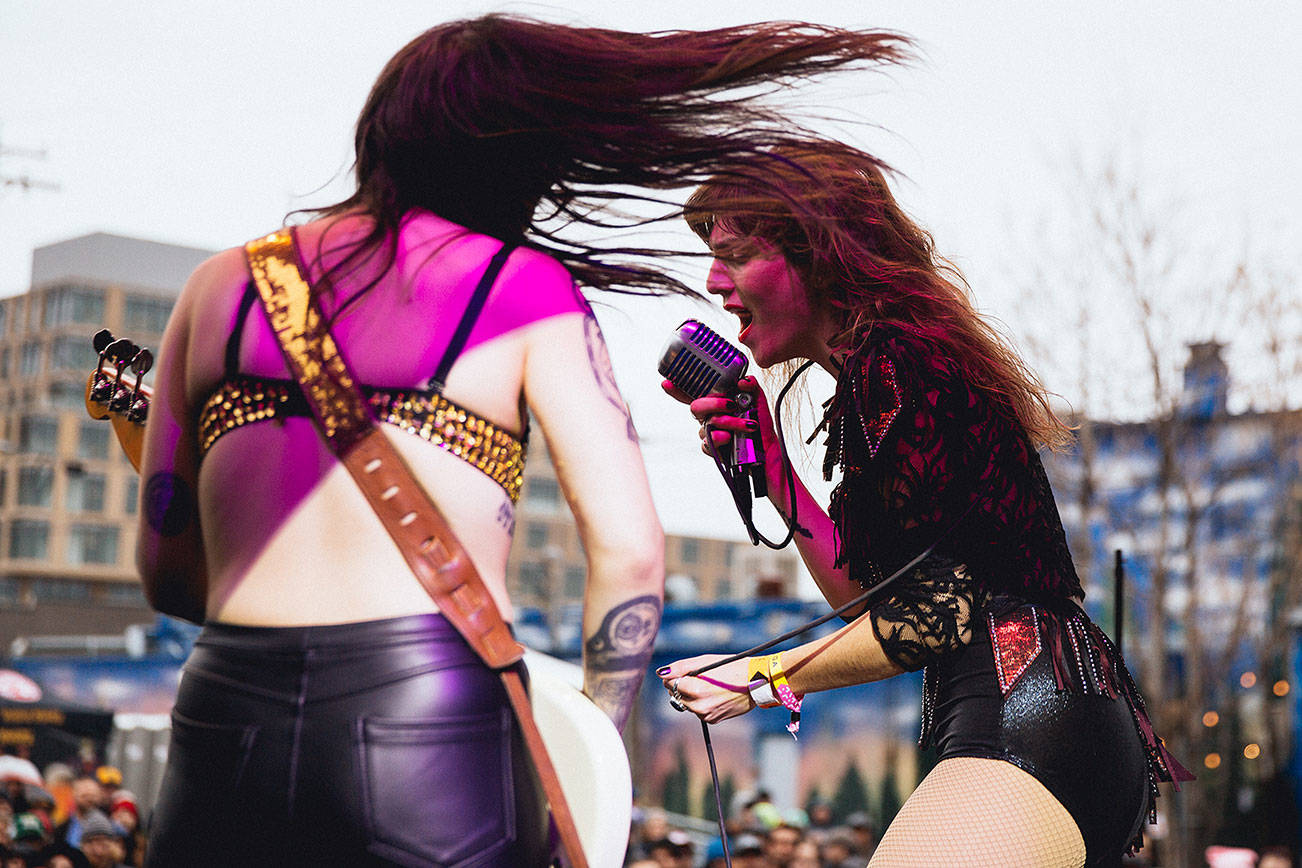In the 1980s, Juan Alonso-Rodríguez was looking for a new town to call home. A native of Cuba, he had been living in Miami since he was 10 and was looking for a change of scenery. He and his partner at the time sent letters to chambers of commerce in cities they were considering. Only Seattle wrote back, sending an information packet that won over the young couple. As he prepared to move, Alonso-Rodríguez subscribed to the Sunday Post-Intelligencer and read about the town he’d never been to. One day he saw a cigarette ad on the back of a magazine featuring a skyline. “Wow, I should move there,” he said. “That’s Seattle,” a friend told him. “You are moving there.”
Shortly after Alonso-Rodríguez arrived, he was hired by a Seattle frame shop. And here is where fate stepped in: Knowing that Alonso-Rodríguez was an artist, the shop’s owner asked him to frame some of his work to showcase the frames. His distinctive style caught the attention of gallery owners.
Now Alonso-Rodríguez’s art hangs in the mayor’s office.
Specifically, it’s Alonso-Rodríguez’s strata series that greets visiting dignitaries to City Hall. The acrylic-on-wood panel paintings feature alternating bands of color—black and white, for example, or different shades of blue and turquoise—with a slight three-dimensional effect that the self-taught artist creates using molding paste and layers of translucent paint, drips, and puddles. The 61-year-old says the work is inspired by layers of earth or decaying walls in his native Cuba, as well as “beautiful old faces, or even an old dog.” He explains: “I wanted to evoke that wisdom and grace without being literal.”
The paintings capture a kind of reverence or appreciation. “When I see buildings in Cuba crumbling, it’s a shame, but there’s a beauty in the crumbling,” the artist says. “I wouldn’t ask for it to be that way, but since it’s here, I’m going to capture it.” One way he does so is with bronze paints that acquire a natural patina.
Alonso-Rodríguez left Cuba just before his 10th birthday. His mother had died a few years before, and his father sent him to the U.S. with an aunt and uncle. Alonso-Rodríguez didn’t get along very well with them, and he never saw his dad again. Nonetheless, he is “super-grateful,” he says. “If I lived in Cuba, I would probably be dead now,” explaining that gays faced persecution in Cuba, especially in the ’70s and ’80s. “And keeping my mouth shut is hard,” he adds—a dangerous quality under an authoritarian regime.
In 2011, Alonso-Rodríguez went to Cuba for the first time since leaving as a boy 45 years earlier. He visited the house where he grew up, as well as his family’s beach house, which he preferred as a boy. “I would get lost there,” he says flipping through the book of photos from the journey that he later published. “I loved to explore and would be outside for hours at a time.”
The house is in disrepair, but many of Alonso-Rodríguez’s favorite details survive. “See that iron work? My father made that,” he says pointing to geometric railing on the balcony. The mid-century-modern house is full of patterns and straight lines in the architecture and furniture. It inspired a patterns series of acrylic-on-canvas paintings that Alonso-Rodríguez has nearly completed.
Five paintings from the series currently hang in Alonso-Rodríguez’s downtown studio. Each focuses on a rectangular pattern that, with squared corners and smaller central rectangles, looks somewhat like a large cassette tape. Some canvases explore the shape in different shades of black or blue, and a pair of canvases contain a single iteration of the rectangular pattern on a large field of color. Alonso-Rodríguez points to one of these, a blue and black pattern outlined in a thin stripe of peach against a field of deep purple, darkening like a night sky toward the horizon.
“I want to live in there,” Alonso-Rodríguez says. “These give me a lot of comfort.”
While the patterns series is winding down, Alonso-Rodríguez has already chosen its successor: tobacco. The artist visited Cuba again last month, and, in anticipation of his trip, channeled his excitement into paintings inspired by Cuban tobacco farms, where leaves are laid side by side to dry. He completed the first two iterations—which cover large canvases with slightly curved triangles in shades of brown and yellow—before he left. “I don’t know where it will go from here,” he says, explaining that he may venture into colors outside natural tobacco hues.
“All my work is an ongoing experiment,” says Alonso-Rodríguez. “I never want to limit myself. It drives people crazy—it drives gallery owners crazy—‘What is he going to do now?’ But you can always see it’s my work.”
These days, Alonso-Rodríguez still remembers when no one knew his work and how the opportunity provided by the frame-shop owner put his career in motion. He pays it forward by showcasing other artists in his studio. In addition to hosting a retrospective of Yadviga Dowmont, Alonso-Rodríguez has taken to turning over the small front room of his studio to up-and-coming artists, particularly queer artists and people of color. “I don’t censor at all,” he says, “I just give them the walls.”
arts@seattleweekly.com
